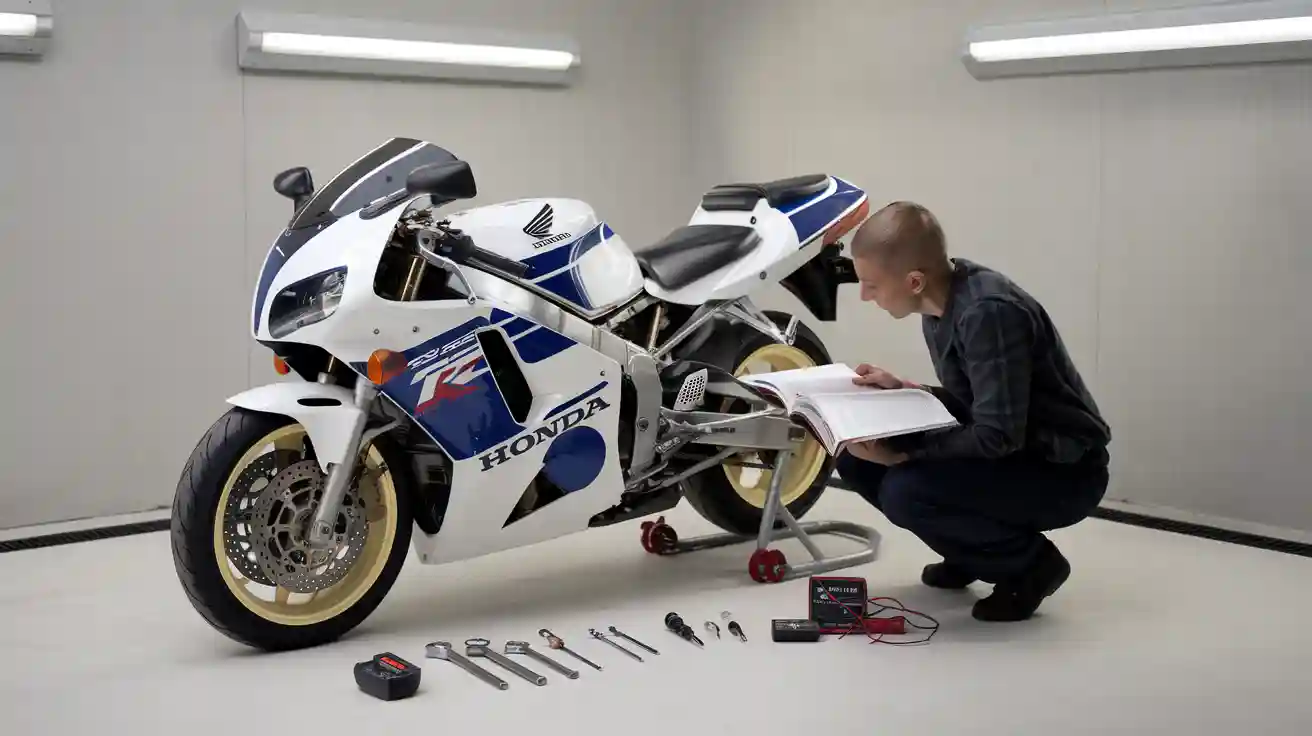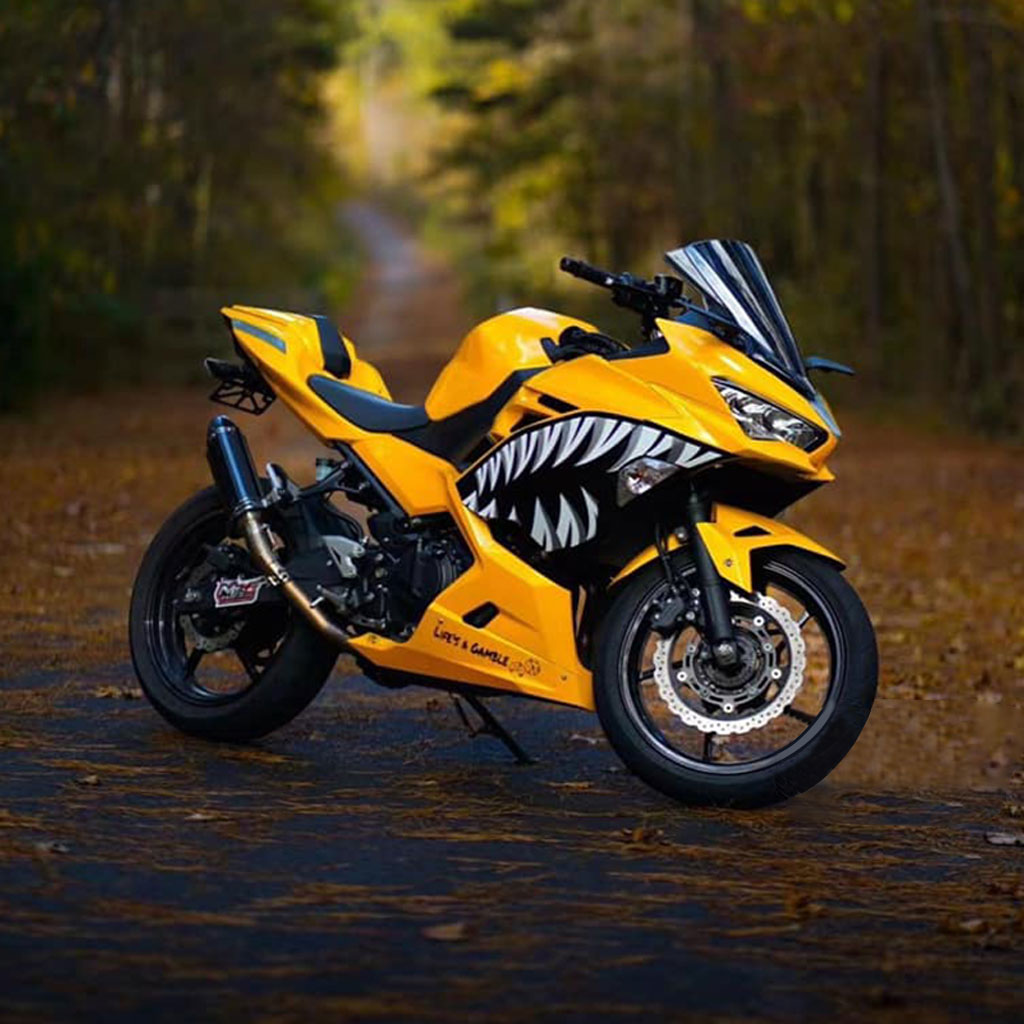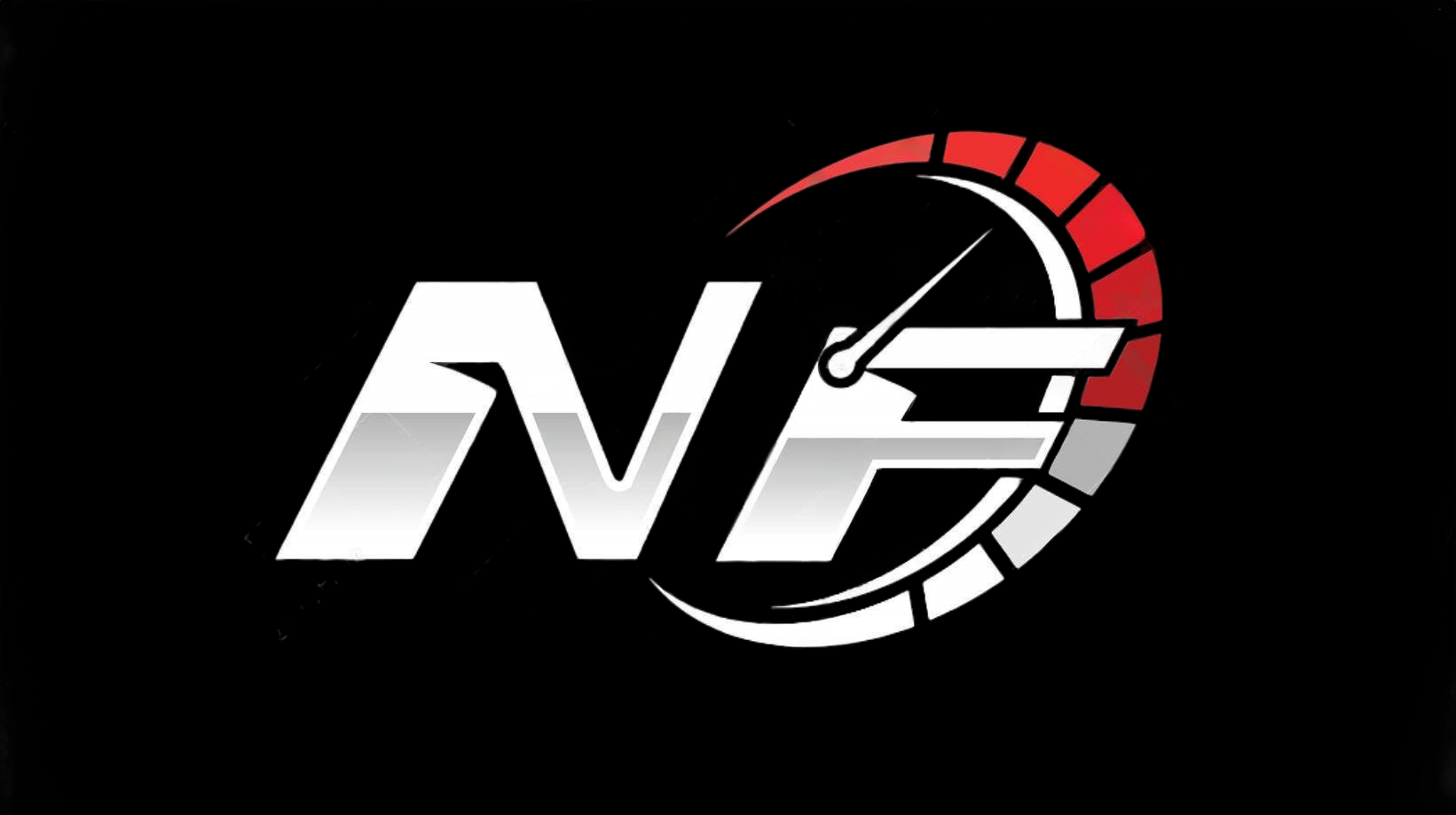What Every Honda RR 1000 2006 Owner Should Know About Troubleshooting

You may notice your Honda RR 1000 2006 struggles to start or runs rough on the road. Many owners report issues with the engine, electrical system, or clutch on this motorcycle. When your Honda RR 1000 2006 faces a tough issue, check the battery, fuel, and spark first. Quick checks keep your RR safe and reliable.
Tip: Always listen for odd sounds from your RR to catch problems early.
Honda RR 1000 2006 Engine Won't Start and Performance Issues
Common Causes When Engine Won't Start
When your Honda RR 1000 2006 engine won't start, you may feel frustrated. You want to ride, but the bike just sits there. Many riders face this issue with the 2006 Honda CBR1000RR. You can check a few things right away to find the problem.
- Check the battery. A weak battery often causes starting problems.
- Inspect the starter button and kill switch. Make sure both work.
- Listen for the fuel pump. If you do not hear it, you may have a fuel pump issue.
- Look at the dashboard lights. Dim or no lights can mean electrical issues.
Tip: If your engine won't start, always check the basics first. You can save time and avoid bigger repairs.
No-start conditions often come from simple problems. You can fix many of them yourself. If you hear the starter motor but the engine does not fire, you may have a spark or fuel problem. If you hear nothing, check the battery and starter relay.
Fuel Delivery and Spark Plug Troubles
Fuel and spark work together to start your 2006 Honda CBR1000RR. If either fails, your engine will not run. You should check the fuel system first. Make sure the tank has enough fuel. Old or dirty fuel can clog the pump or injectors. You may also have a fuel delivery issue if the pump does not prime when you turn the key.
- Listen for the fuel pump when you switch on the ignition.
- Check the fuel lines for leaks or cracks.
- Replace the fuel filter if it looks dirty.
Spark plugs play a big role in starting. Worn or fouled plugs can stop your engine from running. You should remove the plugs and inspect them. Look for black soot or oil, which means spark plug fouling. Replace the plugs if they look bad.
| Symptom | Possible Cause | Quick Fix |
|---|---|---|
| Engine cranks, won't start | No fuel or no spark | Check pump and plugs |
| No sound from pump | Fuel pump issue | Test or replace pump |
| Weak spark | Bad plugs or coils | Replace plugs, check coils |
Note: Always use the right spark plugs for your CBR. Wrong plugs can cause more issues.
Cam Chain Tensioner Failure on 2006 Honda CBR1000RR
The cam chain tensioner keeps your engine running smooth. On the 2006 Honda CBR1000RR, this part can fail. If you hear a rattling noise from the engine, you may have a tensioner problem. A bad tensioner can cause poor starting, rough idle, or even engine damage.
You should listen for ticking or rattling sounds when you start your RR. If you hear them, stop riding and check the tensioner. Many owners replace the stock tensioner with an upgraded one to avoid future issues.
- Watch for engine warning lights.
- Listen for odd noises at start-up.
- Replace the tensioner if you notice problems.
Warning: Ignoring cam chain tensioner issues can lead to major engine damage. Fix this problem as soon as you notice it.
You can keep your Honda running strong by checking these common problems. Quick action helps you avoid bigger repairs and keeps your 1000 RR ready for every ride.
Irregular Idling and Power Loss
You may notice your CBR starts to idle unevenly or loses power while riding. These symptoms can make your Honda RR 1000 2006 feel less responsive and less safe. You should pay close attention to these signs because they often point to problems in the engine or fuel system.
When your 1000 idles roughly, the engine may sound like it is sputtering or shaking. Sometimes, the RPM needle jumps up and down. You might also feel the bike hesitate when you twist the throttle. Power loss can happen suddenly or build up over time. Both issues can make your ride unpredictable.
Common Causes of Irregular Idling and Power Loss
You can trace most idling and power problems to a few main areas:
- Dirty or clogged fuel injectors
- Old or low-quality fuel
- Vacuum leaks in hoses or intake boots
- Faulty sensors, such as the throttle position sensor (TPS)
- Worn or fouled spark plugs
Tip: Always use fresh, high-quality fuel in your CBR. Old fuel can clog injectors and cause poor performance.
Step-by-Step Troubleshooting
You can follow these steps to find the cause of irregular idling or power loss in your 1000:
- Check the fuel level and quality. Drain old fuel if it smells bad or looks dirty.
- Inspect the air filter. Replace it if it looks clogged or dirty.
- Examine the spark plugs. Replace them if you see black soot or oil.
- Look for vacuum leaks. Squeeze hoses and listen for hissing sounds.
- Test the throttle position sensor. Use a multimeter to check for correct readings.
| Symptom | Likely Cause | What You Should Do |
|---|---|---|
| Uneven idle | Dirty injectors, vacuum leak | Clean injectors, check hoses |
| Sudden power loss | Bad fuel, faulty sensor | Replace fuel, test sensors |
| Hesitation on throttle | Worn spark plugs | Replace spark plugs |
Preventing Future Problems
You can prevent most idling and power issues by following a regular maintenance schedule for your CBR. Clean the fuel system every season. Replace the air filter and spark plugs as recommended in your owner's manual. Check all hoses for cracks or leaks. These steps help your Honda run smoothly and keep the engine strong.
Note: If you still have problems after these checks, you should visit a certified Honda mechanic. Some issues need special tools or experience to fix.
You keep your 1000 in top shape by acting quickly when you notice irregular idling or power loss. Your attention to detail helps your CBR deliver the performance you expect every time you ride.
Electrical System Problems on Honda RR 1000 2006
Battery Drain and Charging Issues
You may notice your Honda struggles with starting after sitting for a few days. This often points to a battery issue. Always check the battery connection first. Loose or corroded terminals can stop your bike from starting. Use a voltmeter to test the battery. A healthy battery should read around 12.6 volts when the engine is off.
If you see the voltage drop below 12 volts, you likely have a charging problem. Check the battery connection again. Make sure both terminals are tight and clean. If the battery drains quickly, inspect the charging system. Look at the regulator and stator for signs of wear or damage.
Tip: Keep your battery on a trickle charger if you do not ride often. This helps prevent starting problems.
Starter Relay and Ignition Switch Troubleshooting
Starter problems can leave you stranded. If you press the starter button and nothing happens, listen for a click from the starter relay. No sound means the starter relay may have failed. You should also check the wiring. Sometimes, a loose wire can stop the starter from working.
Inspect wiring connections near the starter relay and ignition switch. If you find corrosion or damage, clean or replace the wires. Starter relay failure often causes repeated starting attempts with no engine response. If you suspect ignition switch issues, try turning the key several times. A worn ignition switch can stop the starter from engaging.
| Problem | What to Check | Quick Fix |
|---|---|---|
| No sound when starting | Starter relay, wiring | Replace relay, fix wires |
| Starter clicks, no start | Battery, starter motor | Charge battery, test starter |
| Key turns, no power | Ignition switch issues | Replace ignition switch |
Flasher Relay and Lighting Problems
Lighting problems can affect your safety. If your turn signals or headlights do not work, check the flasher relay. A bad relay can cause lights to blink fast or not at all. You should also check the bulbs and fuses.
Start by testing each light. Replace any blown bulbs. If the problem continues, replace the flasher relay. Always check the wiring for loose or broken connections. Good lighting keeps you visible and safe on the road.
Note: Electrical issues often come from simple problems. Always check the basics before replacing expensive parts.
Transmission and Clutch Troubles on 2006 Honda CBR1000RR
Shifting Difficulties and Clutch Slippage
You may notice your bike feels rough when you shift gears. Sometimes, the gears do not engage smoothly. This can make your ride less safe. Clutch slippage is another common problem. When the clutch slips, the engine revs but the bike does not speed up as it should.
You should check the oil first. Old or low oil can cause shifting problems. Dirty oil can make the clutch plates stick or slip. Always use the correct oil for your Honda. Change the oil at the recommended intervals. If you see dark or gritty oil, replace it right away.
Look at the clutch lever. Make sure it moves freely. If it feels stiff, you may need to adjust it. Check the clutch plates for wear. Worn plates can cause slippage. Replace them if you see signs of damage.
Tip: Use fresh oil and keep the oil level correct. This helps prevent most clutch and shifting issues.
| Symptom | Possible Cause | What You Should Do |
|---|---|---|
| Hard to shift | Old or low oil | Change or add oil |
| Clutch slips | Worn plates, oil | Replace plates, change oil |
Hydraulic and Cable Clutch Issues
Your 2006 Honda CBR1000RR may use a hydraulic or cable clutch. Each type has its own problems. If you have a hydraulic clutch, check the fluid level. Low fluid can make the clutch feel soft or spongy. Use the right fluid and keep it clean. Air in the system can also cause problems. Bleed the clutch to remove air bubbles.
If your bike uses a cable clutch, inspect the cable for fraying or rust. Lubricate the cable often. Adjust the cable tension so the clutch engages smoothly. Replace the cable if you see damage.
Note: Always check the oil and clutch system before every ride. This keeps your Honda running strong.
Suspension, Braking, and Ride Stability for Honda RR 1000 2006

Unstable Ride and Suspension Concerns
You may feel your Honda RR 1000 2006 wobble or bounce on the road. This often means your suspension needs attention. Check the front forks for leaks. If you see oil on the fork tubes, the seals may have failed. Worn fork seals let oil escape, which reduces damping and makes the ride rough.
Look at the rear shock. If you notice oil around the shock, it may not work well. A dry shock should not leak oil. Test the suspension by pressing down on the seat. The bike should bounce once and settle. If it keeps bouncing, the shock or forks may need service.
Common causes of unstable rides include:
- Low or leaking fork oil
- Worn fork seals
- Damaged rear shock
- Incorrect suspension settings
Tip: Always use the correct type and amount of oil in your suspension. This keeps your ride smooth and safe.
Brake Fade and Maintenance Tips
You need strong brakes for safe riding. If you feel the brakes get weak after hard use, you may have brake fade. This happens when the brake fluid or pads get too hot. Old or dirty oil in the brake system can also cause problems.
Check the brake fluid level often. Use fresh oil that meets Honda’s specs. If you see dark or dirty oil in the reservoir, change it right away. Inspect the brake pads for wear. Thin pads cannot stop your bike well.
Follow these steps for better braking:
- Change brake oil every year.
- Use high-quality oil for the brake system.
- Check for leaks around the calipers and lines.
- Replace worn pads before they get too thin.
| Problem | What to Check | Solution |
|---|---|---|
| Weak brakes | Old brake oil | Change oil |
| Spongy lever | Air in system | Bleed brakes, add oil |
| Squeaking noise | Worn pads | Replace pads |
Note: Never mix different types of oil in your brake system. Always use the type listed in your owner’s manual.
Preventive Maintenance for Honda RR 1000 2006 Owners
Routine Checks and Service Intervals
You keep your Honda RR 1000 2006 running well by following a regular maintenance schedule. Check your oil before every ride. Clean oil helps your engine last longer. Change the oil every 4,000 miles or as your manual suggests. Use the right type and amount for your motorcycle.
Inspect your chain for tightness and clean it often. Lubricate the chain after every 500 miles. Look at your tires for cuts or low tread. Check the tire pressure with a gauge. Good tires help you stay safe.
You should also check your brake pads and brake oil. Replace the pads if they look thin. Change the brake oil once a year. Test your lights and signals before you ride. Make sure your battery stays charged.
| Item | Check Interval | What to Do |
|---|---|---|
| Oil | Every ride/4,000 mi | Check, change, top up |
| Chain | 500 mi | Clean, lube, adjust |
| Tires | Every ride | Inspect, check pressure |
| Brake pads/oil | Monthly/Yearly | Inspect, replace, change |
Tip: Mark your calendar for each service. This helps you remember when to check each part.
Owner Best Practices for Longevity
You help your motorcycle last longer by using good habits. Warm up the engine before you ride. This lets the oil flow and protects the parts. Always use fresh fuel. Old fuel can clog the pump and cause problems.
Store your motorcycle in a dry place. Cover it to keep dust and water away. Clean your bike after riding in rain or mud. Dirt can damage moving parts.
Ride smoothly and avoid hard stops. This reduces wear on your brakes and tires. Listen for strange sounds. If you hear anything odd, check your motorcycle right away.
Note: Preventive care saves you money and keeps your Honda RR 1000 2006 ready for every ride.
You can keep your honda rr 1000 2006 running strong by following these steps:
- Check the basics first when you face engine or electrical problems.
- Inspect your clutch, brakes, and suspension often.
- Stick to a regular maintenance schedule.
Quick action helps you avoid bigger repairs and keeps your ride safe.
FAQ
How often should you change the oil on your Honda RR 1000 2006?
You should change the oil every 4,000 miles or as your owner’s manual suggests. Clean oil keeps your engine healthy and helps prevent major problems.
What should you do if your Honda RR 1000 2006 will not start?
Check the battery first. Make sure the fuel tank is full. Inspect the spark plugs for wear. Listen for the fuel pump. If you still have trouble, contact a Honda mechanic.
Why does your Honda RR 1000 2006 lose power while riding?
Dirty fuel injectors, old fuel, or worn spark plugs can cause power loss. You should clean the injectors, use fresh fuel, and replace spark plugs if needed.
How can you prevent brake fade on your Honda RR 1000 2006?
Tip: Change your brake fluid every year. Use high-quality brake pads. Check for leaks and replace worn pads before they get too thin.
What are signs of a failing cam chain tensioner?
You may hear rattling or ticking noises from the engine. The bike may idle rough or start poorly. Replace the tensioner if you notice these signs to avoid engine damage.

